In today's fast-paced product development landscape, the ability to quickly transform digital designs into physical prototypes is crucial. CNC prototype manufacturing services have emerged as a cornerstone technology for engineers, product designers, and startups seeking to validate concepts with high-precision physical models. By leveraging computer numerical control (CNC) machining, these services offer unparalleled accuracy, material versatility, and production speed that can significantly accelerate your development timeline.
Whether you're developing medical devices, aerospace components, consumer electronics, or industrial equipment, CNC machining provides the precision and material properties needed for functional testing and validation. This guide explores how CNC prototype manufacturing services can help you bridge the gap between concept and production with efficiency and cost-effectiveness.
Benefits of CNC Machining for Rapid Prototyping
When developing new products, choosing the right prototyping method can significantly impact your development timeline, budget, and product quality. CNC machining offers distinct advantages over other prototyping methods, particularly when precision and material properties are critical to your design validation.

Modern 5-axis CNC machine creating a precision metal prototype
CNC Machining vs. 3D Printing for Prototypes
| Comparison Factor | CNC Machining | 3D Printing |
| Dimensional Accuracy | ±0.001" to ±0.005" (0.025-0.125mm) | ±0.005" to ±0.010" (0.125-0.25mm) |
| Surface Finish | Excellent (as low as 16 Ra) | Fair to Good (layer lines often visible) |
| Material Options | Wide range of metals, plastics, and composites | Limited to specific plastics, resins, and some metals |
| Mechanical Properties | Identical to production materials | Often anisotropic (direction-dependent strength) |
| Lead Times | 1-10 days depending on complexity | Hours to days depending on size |
| Cost for Small Quantities | Medium to High | Low to Medium |
| Geometric Complexity | Limited by tool access | Excellent for complex geometries |
Key Advantages of CNC Prototype Manufacturing
Advantages
- Superior dimensional accuracy and repeatability
- Production-identical materials and properties
- Excellent surface finish with minimal post-processing
- Scalable from single prototypes to small production runs
- Consistent quality across multiple iterations
- Suitable for functional testing under real-world conditions
- Fast turnaround for time-sensitive projects
Limitations
- Higher initial setup costs compared to 3D printing
- Geometric constraints due to tool access limitations
- Material waste from subtractive process
- Limited internal features without multi-axis machining
- Not cost-effective for extremely complex geometries
- Requires design optimization for manufacturability
CNC machining excels when your prototype requires precise dimensions, specific material properties, and excellent surface finish. It's particularly valuable for functional prototypes that need to withstand mechanical testing or interface with other components.
Material Options for CNC Prototype Manufacturing Services
One of the greatest advantages of CNC prototype manufacturing services is the extensive range of materials available. Unlike other prototyping methods that may be limited to specific materials, CNC machining can work with virtually any solid material that can be cut with standard or specialized tooling.
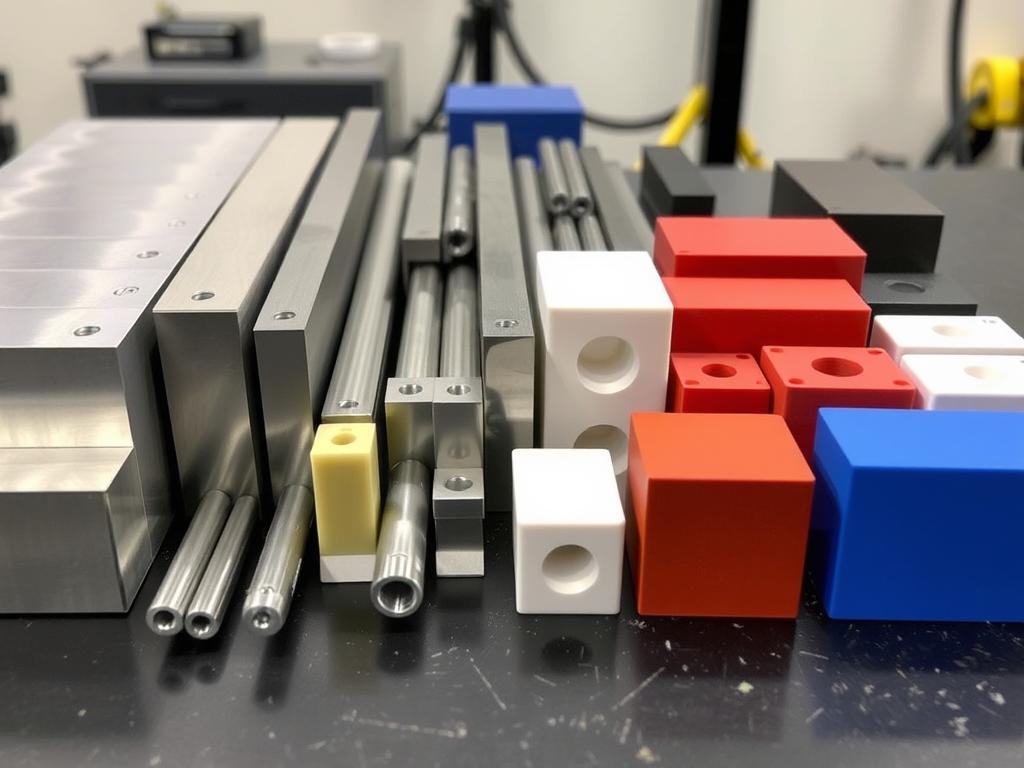
Common materials used in CNC prototype manufacturing
Metal Materials for CNC Prototyping
Aluminum Alloys
- Aluminum 6061: Excellent strength-to-weight ratio, good corrosion resistance
- Aluminum 7075: Higher strength, aerospace applications
- Aluminum 5052: Superior corrosion resistance, marine applications
Ideal for: Lightweight structural components, electronics housings, aerospace parts
Stainless Steel
- 304 Stainless: Good corrosion resistance, food-safe
- 316 Stainless: Superior corrosion resistance, medical grade
- 17-4 PH: High strength, heat-treatable
Ideal for: Medical devices, food processing equipment, marine applications
Specialty Metals
- Titanium: Exceptional strength-to-weight ratio, biocompatible
- Brass: Good electrical conductivity, decorative applications
- Tool Steel: High hardness, wear resistance
Ideal for: Medical implants, electrical components, tooling applications
Plastic Materials for CNC Prototyping
Engineering Plastics
- ABS: Good impact resistance, economical
- Polycarbonate (PC): High impact strength, optical clarity
- Acetal/Delrin: Low friction, good dimensional stability
Ideal for: Consumer products, electronic housings, mechanical components
High-Performance Plastics
- PEEK: High temperature resistance, chemical resistance
- Ultem (PEI): Flame retardant, high heat resistance
- PTFE (Teflon): Extremely low friction, chemical resistant
Ideal for: Aerospace, medical, chemical processing applications
Specialty Plastics
- Nylon: Good wear resistance, self-lubricating
- HDPE: Chemical resistant, food-safe
- Acrylic: Optical clarity, UV resistant
Ideal for: Bearing surfaces, food processing equipment, display components
Material Selection Tip
When selecting materials for your CNC prototype, consider not just the mechanical properties needed for testing, but also whether you want the prototype to match your intended production material. This approach allows for more accurate validation of both form and function.
The ability to machine such a wide variety of materials makes CNC prototype manufacturing services incredibly versatile for different applications. Your material choice should be guided by the functional requirements of your prototype, including mechanical properties, environmental conditions, and any regulatory considerations.
Design Tips for CNC-Friendly Prototypes
Creating designs optimized for CNC machining can significantly reduce costs, improve quality, and decrease lead times for your prototypes. While CNC machining offers exceptional precision, understanding its inherent constraints will help you design parts that maximize the benefits of this manufacturing process.

CAD model optimized for CNC machining with key design features highlighted
5 Best Practices for CNC-Friendly Prototype Designs
1. Design with Internal Corner Radii
CNC cutting tools are round, making it impossible to create perfectly sharp internal corners. Design all internal corners with radii at least equal to or larger than your smallest cutting tool (typically 1/16" or 1.5mm).
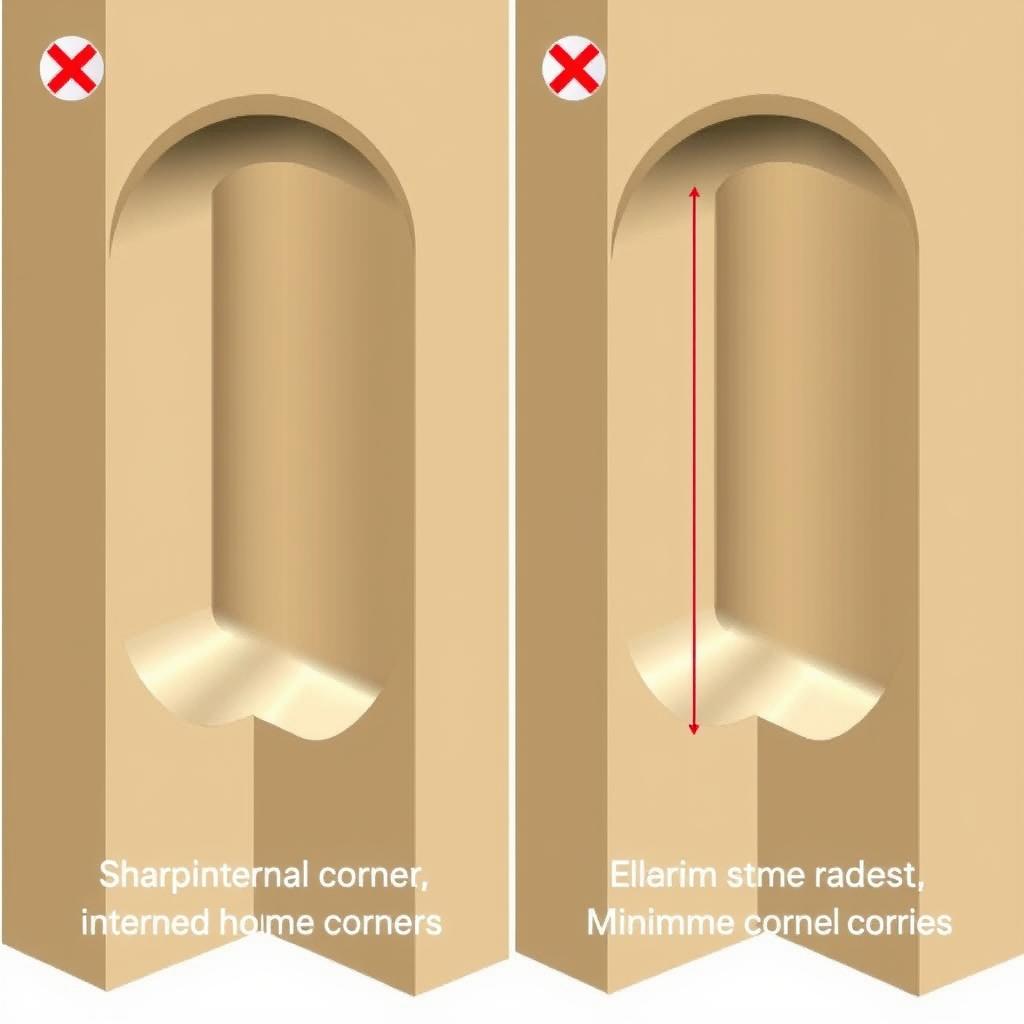
2. Maintain Uniform Wall Thickness
Thin walls can vibrate during machining, causing dimensional inaccuracies or tool breakage. For metal prototypes, maintain minimum wall thickness of 0.8mm (0.031"). For plastics, minimum wall thickness should be 1.5mm (0.060") to prevent deflection.
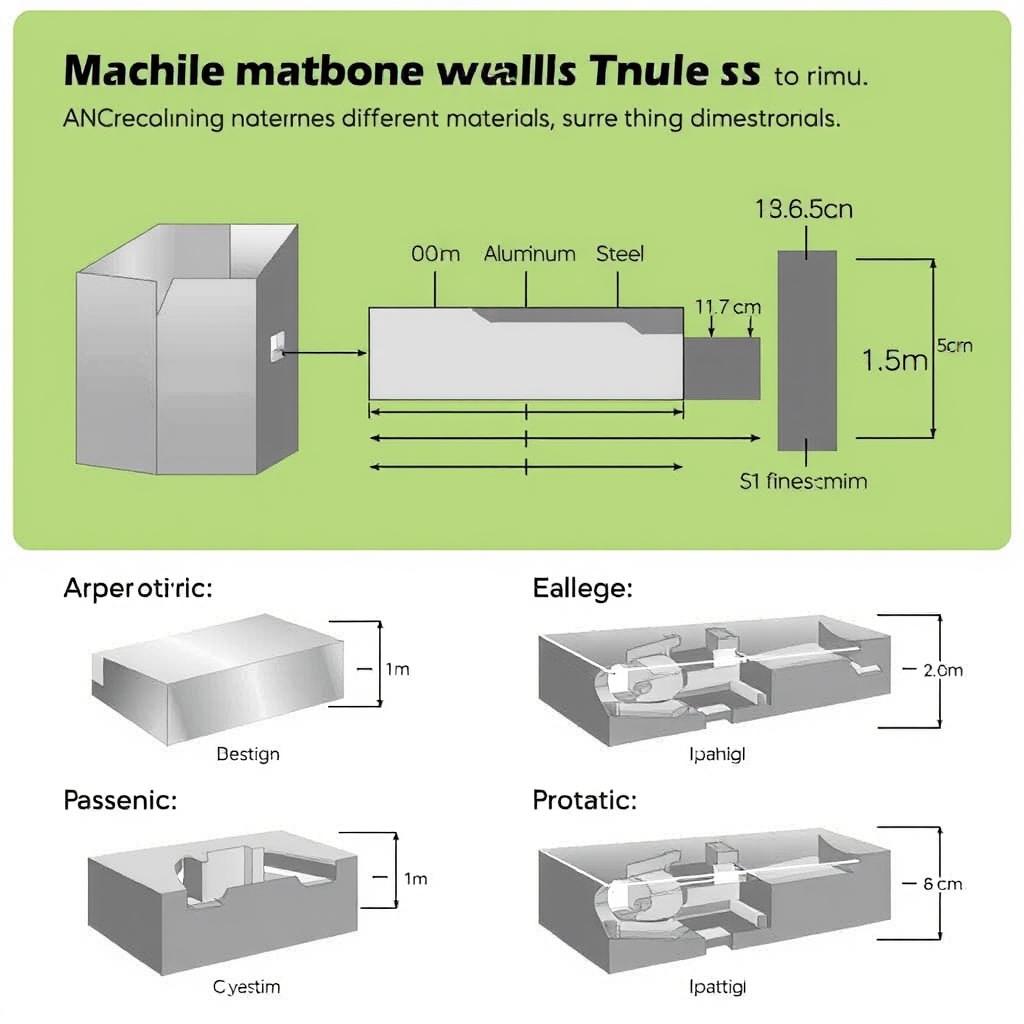
3. Consider Tool Access and Part Orientation
Design parts with consideration for how cutting tools will access features. Avoid deep pockets with small corner radii, as they require long, thin tools prone to deflection. Consider how the part will be fixtured during machining and plan for multiple setups if necessary.
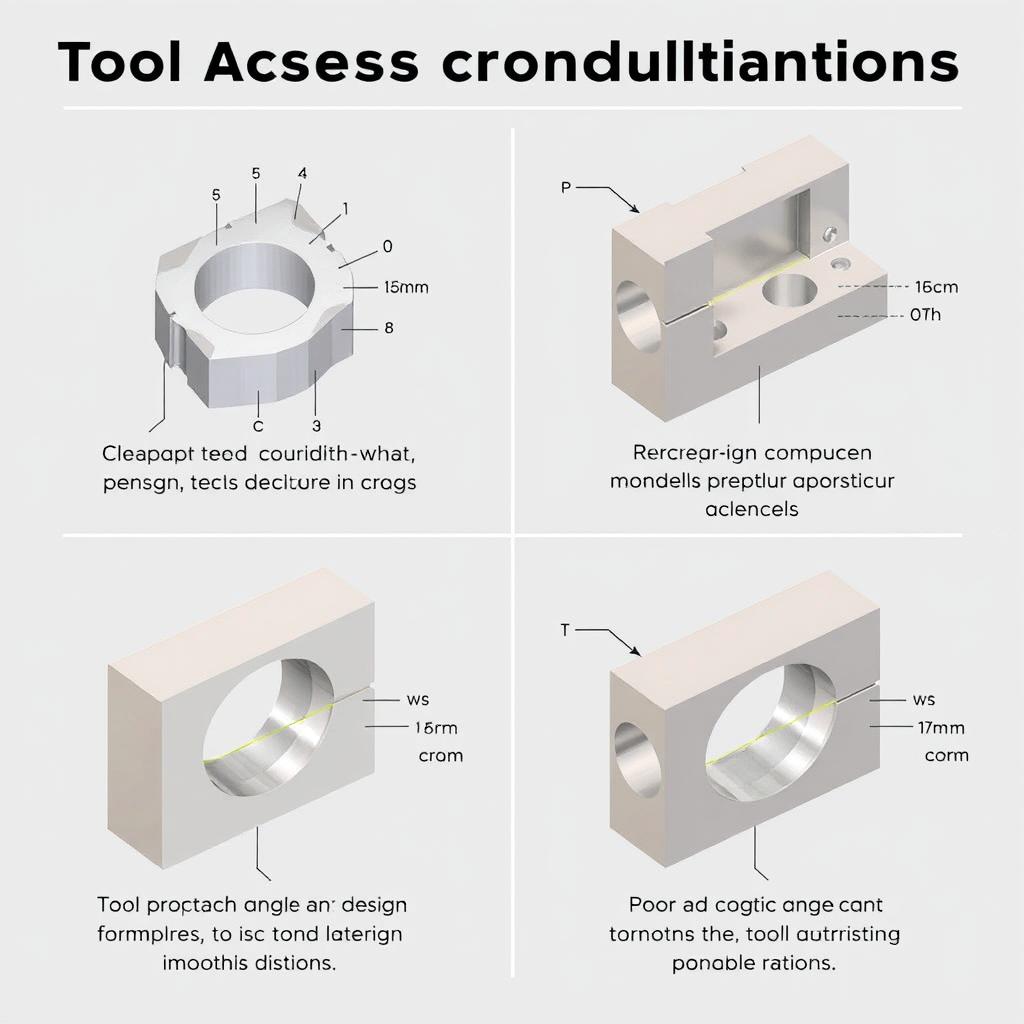
4. Specify Appropriate Tolerances
Tighter tolerances increase machining time and cost. Only specify tight tolerances (±0.001" or ±0.025mm) for critical features like mating surfaces or bearing fits. For non-critical features, standard tolerances (±0.005" or ±0.127mm) are more economical.

5. Design for Standard Tooling
Using standard tool sizes reduces setup time and cost. Design holes, slots, and pockets to dimensions that match common end mill and drill bit sizes. For threads, use standard sizes rather than custom thread profiles whenever possible.

Common CNC tooling sizes to consider in your design
DFM Analysis Tip
Many CNC prototype manufacturing services offer Design for Manufacturability (DFM) analysis before production. This service can identify potential manufacturing issues and suggest design improvements to reduce costs and improve quality. Always take advantage of this service when available.
By implementing these design best practices, you can significantly improve the manufacturability of your CNC prototypes, reducing costs and lead times while maintaining the precision and quality you need for effective testing and validation.
Cost Analysis: Understanding CNC Prototype Manufacturing Pricing
Cost is often a primary consideration when selecting a prototyping method. Understanding the factors that influence CNC machining costs can help you make informed decisions and optimize your designs for cost-efficiency without sacrificing quality.
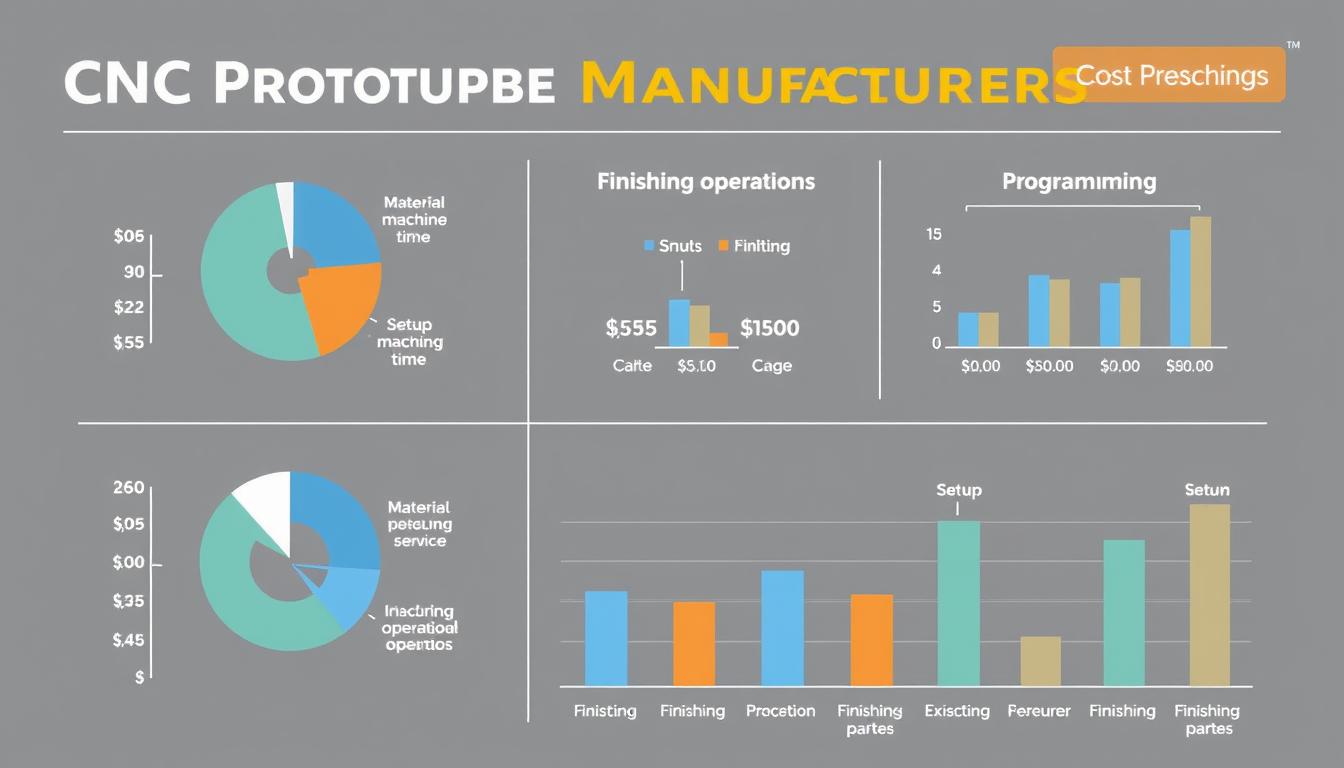
Typical cost breakdown for CNC prototype manufacturing
Primary Cost Factors in CNC Prototyping
| Cost Factor | Impact on Price | Cost Reduction Strategies |
| Material Selection | 10-30% of total cost | Use standard material sizes; consider aluminum instead of stainless steel for non-critical applications |
| Programming & Setup | 15-25% of total cost | Simplify design; order multiple parts to distribute setup costs |
| Machine Time | 30-50% of total cost | Optimize design for machining; avoid tight tolerances on non-critical features |
| Part Complexity | Varies widely | Design for fewer setups; avoid deep pockets and thin walls |
| Surface Finishing | 5-15% of total cost | Specify only necessary finishes; use as-machined finish where possible |
| Quality Inspection | 5-10% of total cost | Specify inspection only for critical dimensions |
Cost Comparison by Quantity

Cost per part comparison across manufacturing methods and quantities
CNC machining has a relatively high setup cost but becomes more economical as quantity increases, especially for small to medium production runs. For very low quantities (1-5 parts), the setup cost is distributed across fewer parts, making the per-part cost higher. However, CNC machining becomes increasingly cost-competitive in the 10-500 unit range compared to other methods.
Balancing Cost, Quality, and Lead Time
Economy Option
- Standard tolerances (±0.005")
- Common materials (aluminum, ABS)
- As-machined finish
- Standard lead time (7-10 days)
Best for: Concept validation, form studies
Standard Option
- Tighter tolerances (±0.002")
- Wider material selection
- Basic finishing options
- Expedited lead time (3-5 days)
Best for: Functional testing, pre-production validation
Premium Option
- Precision tolerances (±0.001")
- Specialty materials
- Advanced surface finishes
- Rush lead time (1-2 days)
Best for: Critical applications, regulatory testing
Cost Optimization Tip
When requesting quotes for CNC prototype manufacturing services, provide a technical drawing that clearly indicates which dimensions are critical and which can have standard tolerances. This allows the manufacturer to optimize machining strategies for cost-efficiency while maintaining quality where it matters most.
By understanding these cost factors and strategically designing your parts with manufacturability in mind, you can significantly reduce the cost of CNC prototype manufacturing without compromising on the quality and functionality needed for effective testing and validation.
Choosing the Right CNC Prototype Manufacturing Service Provider
Selecting the right CNC machining partner is crucial to the success of your prototyping project. The ideal service provider should offer not just technical capabilities but also understand your industry requirements and provide support throughout the development process.
Key Factors to Consider When Selecting a Provider
Technical Capabilities
- Machine Capabilities: 3-axis vs. 5-axis, maximum part dimensions
- Material Options: Range of metals and plastics available
- Tolerance Capabilities: Precision levels achievable
- Finishing Options: Surface treatments, anodizing, plating
- Quality Control: Inspection equipment and reporting
Service Factors
- Lead Times: Standard and expedited options
- Design Support: DFM analysis and engineering assistance
- Communication: Responsiveness and technical expertise
- Certifications: ISO 9001, AS9100, ISO 13485 as needed
- Confidentiality: NDA policies and IP protection
Questions to Ask Potential Service Providers
What is your typical lead time for parts similar to mine?
Look for providers who can offer flexible lead times to match your project timeline. Ask about both standard and expedited options, and whether they offer rush services for critical deadlines.
Can you provide material certifications and inspection reports?
For critical applications, especially in medical, aerospace, or automotive industries, proper documentation is essential. Ensure the provider can supply material certifications and detailed inspection reports when required.
What design file formats do you accept?
Most service providers prefer solid CAD models (STEP, IGES, Parasolid) rather than mesh-based formats like STL. Confirm they can work with your preferred CAD format to avoid conversion issues.
Do you offer design for manufacturability (DFM) feedback?
A good CNC partner should provide constructive feedback on your design to improve manufacturability, reduce costs, and ensure quality. This service is particularly valuable for complex parts or those with tight tolerances.
The right CNC prototype manufacturing service provider should function as an extension of your engineering team, offering not just machining capabilities but also expertise and support throughout your product development process. By carefully evaluating potential partners based on these criteria, you can establish a relationship that enhances your prototyping capabilities and accelerates your path to market.

